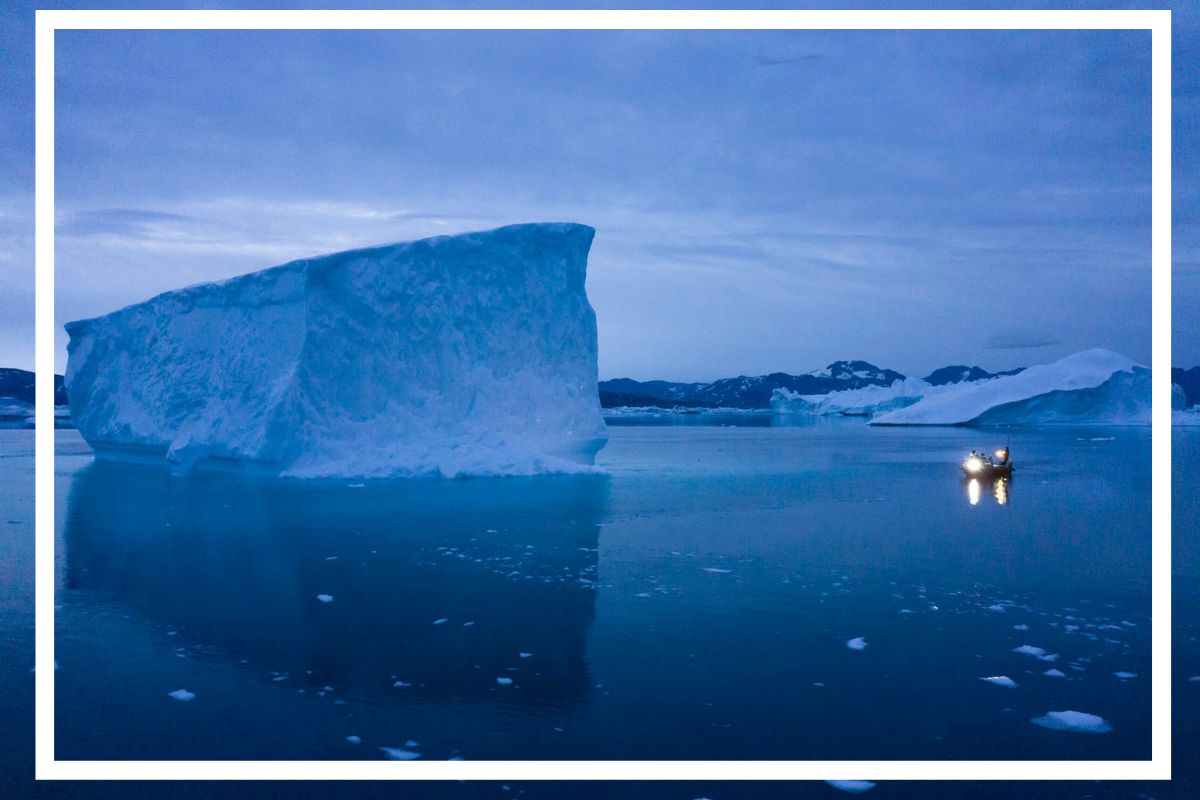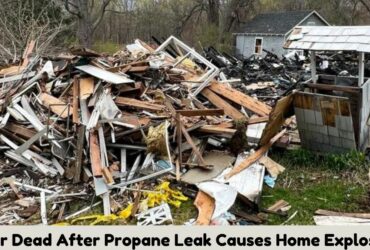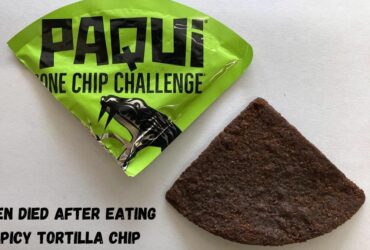According to a study released on Monday, the fast melting ice sheet in Greenland would eventually cause the global sea level to rise by at least 10.6 inches (27 centimeters), which is more than twice as much as predicted.
That is due to something that might be referred to as zombie ice. That is doomed ice that is no longer being replenished by parent glaciers that are now receiving less snow, despite still being tied to thicker sections of ice. Without replenishment, the climate change-induced melting of the fatal ice will definitely raise sea levels, according to research co-author and glaciologist William Colgan of the Geological Survey of Denmark and Greenland.
“Ice is dead. According to Colgan, it will simply melt and vanish off the ice sheet. No matter which climate (emissions) scenario we choose at this time, this ice has been relegated to the ocean.
It is “more like one foot in the grave,” according to the study’s principal author, glaciologist Jason Box of the Greenland survey.
The study’s estimate of an inevitable sea level increase of 10 inches is more than twice as great as what experts had previously predicted would result from the melting of Greenland’s ice sheet. According to a study published in the journal Nature Climate Change, it might measure up to 30 inches (78 centimeters). In contrast, the Intergovernmental Panel on Climate Change assessment from last year predicted that the expected sea level increase due to Greenland ice melt by the year 2100 would range from 2 to 5 inches (6 to 13 cm).
For the investigation, researchers examined the balance of the ice. In a state of perfect equilibrium, snowfall in Greenland’s highlands flows down, replenishes, and deepens glacier sides, balancing off what is melting on the edges. But over the past few decades, there has been an imbalance due to more melting and less refilling. According to the study’s authors, 3.3% of all the ice in Greenland will melt regardless of how much carbon pollution is reduced globally because of the ratio of what is being added to what is being lost, Colgan said.
Colgan remarked, “I think starved would be a suitable description for what’s happening to the ice.
According to one of the study’s authors, the warming ice sheet’s failure to refill its margins has already resulted in the melting of more than 120 trillion tonnes (110 trillion metric tonnes) of ice. If all of the ice were to melt at once over the United States, the resulting water would be 37 feet (11 meters) deep.
Zombie ice from Greenland's ice sheet will raise global sea levels by 10 inches, a new study says. The frozen water is doomed to melt but is still solid right now.https://t.co/DjSl5uxAQE pic.twitter.com/Bbojg2WhFz
— The Associated Press (@AP) August 29, 2022
The figures represent the average sea level rise around the globe, although some regions will see greater sea level rise than others, including the U.S. East Coast, which is closer to Greenland. This much sea level rise “will have huge societal, economic and environmental impacts,” according to Ellyn Enderlin, a geosciences professor at Boise State University who wasn’t involved in the study. Although 10.6 inches may not sound like much, this would be in addition to high tides and storms, making them even worse.
David Holland of NYU, who recently returned from Greenland but is not involved in the study, said: “This is a fairly substantial loss and will have a devastating effect on beaches around the world.”
One of Earth’s two enormous ice sheets, Greenland is progressively diminishing as a result of climate change brought on by the burning of coal, oil, and natural gas. This is the first time scientists have estimated a minimal ice loss and corresponding sea level increase for Greenland. The method utilized on mountain glaciers was applied by scientists to determine the least committed ice loss for the entire massive frozen island.
The committed melting and sea level rise, according to Pennsylvania State University glaciologist Richard Alley, who wasn’t involved in the study but thought it made sense, is similar to adding an ice cube to a cup of hot tea in a heated environment.
From the ice, you have committed mass loss,” Alley wrote in an email. The majority of mountain glaciers in the world and the margins of Greenland would continue to lose mass if temperatures were maintained at current levels because they have been placed in warmer air, similar to how your ice cube has been placed in warmer tea.
Leigh Stearns of the University of Kansas and Sophie Nowicki of the University of Buffalo, two outside ice scientists, said that time is the main unknown and a minor issue with the study. Although the study’s authors said they couldn’t predict when the committed melting would occur, they state “within this century” in the final sentence without providing any evidence for it, according to Stearns.
Colgan said that the team doesn’t know when all the fatal ice will melt, but if they had to guess, it would probably be by the end of this century or at the very least by 2150.
All of this, according to Colgan, is a best-case scenario. Huge melt years occurred in 2012 (and to a lesser extent 2019) when the equilibrium between adding and withdrawing ice was most out of balance. According to him, the Greenland melt could cause the sea level to increase by 30 inches (78 cm) if Earth experiences more years like 2012. Those two years may seem excessive now, but 50 years ago, years that seem regular today would have been extreme, he claimed.
That is how climate change operates, according to Colgan. “Today’s anomalies become averages tomorrow.”




